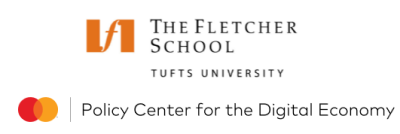They spoke about the following:
- Multi-stakeholder collaboration is now enabled by the Internet in the public policy/regulatory sphere.
- Inputs are received from across society, from businesses, communities, activists.
- Regulators and policymakers generally have three objectives for data governance:
- Reliable architecture with identification access
- Fair and effective competition in all markets (considering new anti-competitive challenges in the world)
- Privacy and confidentiality (an expression of human rights in the digital world).
- Interoperability is also key – this can be legally mandated by government, though this may lead to “lowest common denominator” sourcing, which can be less safe.
- Alternatively, it can be market driven, which allows private sector players to decide details and make choices but can also lead to exclusion. Often market failures drive interoperability.
- There is a mismatch between the pace of technological development and the ability of governments and regulators to keep up (despite the prevalence of regulatory sandboxes).
- Trade-offs for policymakers are many and each market values these differently:
- security
- user experience
- ease of usage
- cost
- In this, it is critical that security is recognized for its central importance.
- Digital public infrastructure in India was not really driven by government, but by private sector innovation and demand.
- Where digital infrastructure works it tends to be unique.
- It cannot be the global North telling the global South how to do things (not least because they do not know themselves).
- The global unbanked have different kinds of trust issues and digital solutions may turn them off and defeat the purpose.
- The trade-off here is between usability and security.
- The role of a digital fiduciary is likely to become ever more interesting and complex as we move to a decentralized Internet. Governments are failing to provide leadership, here.
- There is a need for more public education in cybersecurity, as more people enter the digital world unable to see the danger points.
In conclusion, panelists highlighted several key points:
- Realistic risk assessments and cost benefit analyses are currently missing from policymaking.
- There is a gap in global and regional standards relating to data portability (best example is EU GDPR). This is a semi-solvable solution.
- If the US is serious about digital infrastructure, it should treat it so. The current underinvestment must be resolved, and solid goals set for the economy and US citizens.
- There is an urgent need to accelerate the way policymakers operate and interact with multi-stakeholder communities. Different markets have different ways of resolving the inherent trade-offs.















